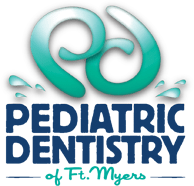
Dr. Tim M. Verwest, DMD voted 2015’s best dentist in Ft. Myers
Pediatric Dentistry of Ft. Myers, Dr. Tim M. Verwest, DMD has been voted 2015’s best dentist in Ft. Myers for dentistry treatment and services as[…]
Top 10 Fright Night Facts
Did you know Americans consumed 24.7 pounds of candy per capita in 2010?1 That’s a lot of sugar to potentially cause cavities if left on[…]
Help Your Teeth Age Gracefully with You
Advances in medical technology, public health, personal health knowledge and greater access to health insurance are some of the key factors helping people in the[…]
Don’t Beware the Dentist’s Chair
The U.S. Centers for Disease Control and Prevention (CDC) estimates that 26 million Americans suffer from diabetes. Even more troubling, another 57 million – about[…]
New Survey: Kids Need Brushing up on Oral Health
Although cavities are nearly 100 percent preventable, more than one out of four American caregivers reported that their children had a cavity filled in the[…]
Dr. Tim M. Verwest, DMD sponsors Swim Energy
Pediatric Dentistry of Ft. Myers, Dr. Tim Verwest, DMD made a generous donation to Swim Energy Aquatics of Ft. Myers. All proceeds donated support the[…]
Wearing the Wires: Kids and Braces
Once upon a time, kids who wore braces were teased by their peers with mean-spirited nicknames such as brace face, tinsel teeth, zipper lips and[…]

Dr. Verwest Sponsors Energy for Life Walkathon
Pediatric Dentistry of Ft. Myers, Dr. Tim Verwest, DMD will sponsor the United Mitochondrial Disease Foundation’s Energy for Life Walkathon. The walkathon will be held[…]
Traits of Toothpaste
Toothpaste – it has been the foundation of the most basic of daily oral health routines dating back to ancient civilizations. But, how many people[…]
Cash for Halloween candy? Dr. Verwest buyback program
Pediatric Dentistry of Ft. Myers, Dr. Tim Verwest, DMD is offering an opportunity to children 13 years or under to trade in their Halloween candy[…]
